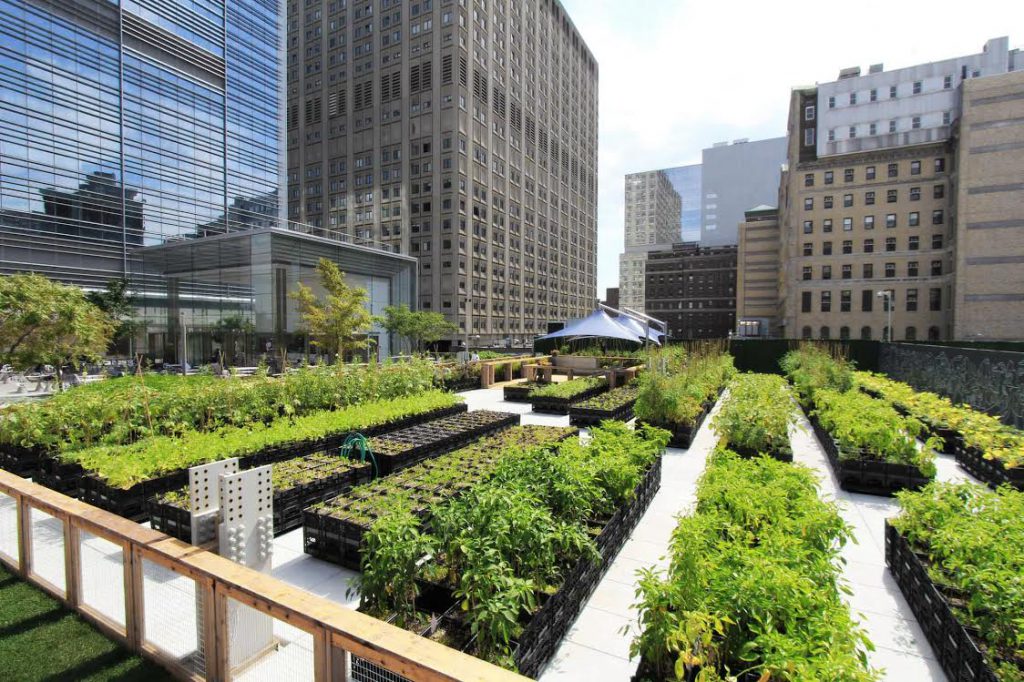
ORE Architecture designed a portable rooftop farm in Brooklyn N.Y. using re-purposed milk crates
Dr. Albie Miles, UH West Oʻahu Assistant Professor of Sustainable Community Food Systems, along with colleagues from Google, Arizona State University, and the University of California have authored a research article quantifying urban agriculture globally and its potential to provide a range of key ecosystem services.
Urban agriculture refers to use of city and suburban spaces whether they be a backyard, rooftop, balcony or fringe space on the side of the road for growing crops, beekeeping, raising chickens and other agricultural activities.

Dr. Albie Miles
The article, “A Global Geospatial Ecosystem Services Estimate of Urban Agriculture,“ was published by the American Geophysical Union’s peer-reviewed journal, Earth’s Future, earlier this month. The 21-page report used datasets in Google Earth Engine to estimate the aggregate benefits of growing crops in cities and found the four key ecosystem services provided by agriculture in urban areas to be worth an estimated $33 billion (USD) annually.
The National Science Foundation, which provided funding for the project, wrote its own article about the research, noting researchers said it was the first time a data-driven approach had quantified the ecosystem benefits of urban agriculture.
“Analysis of the food-energy-water nexus sometimes leaves the impression that benefits are concentrated in one place and costs in another,” said Tom Torgersen, NSF Water, Sustainability and Climate program director, in the article.
“Urban agriculture is an underdeveloped industry that could sequester nitrogen in cities, generate energy savings, help moderate urban climate, reduce storm water runoff, and provide more nutritious foods.”
“We’ve known there are benefits to having these small plots of land in our cities, but we found that the benefits extend well beyond having fresh food in the hands of those who consume it,” explained lead author Nicholas Clinton of Google Inc. in the NSF article.
Miles collaborated with Clinton and Chris Herwig of Google Inc., Michelle Stuhlmacher, Nazli Uludere Aragon, Melissa Wagner and Matei Georgescu of the School of Geographical Sciences and Urban Planning, Urban Climate Research Center at Arizona State University; and Dr. Peng Gong of the Department of Earth System Science, Tsinghua University.
